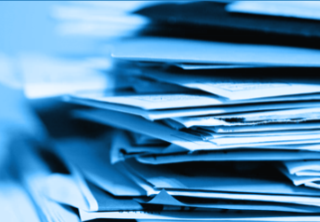Design Patent Damages
- May/Jun 2010
- Article
- Landslide®, Volume 2, Number 5, May/June 2010. © 2010 by the American Bar Association.
Associated Practices
When it comes to damages, most patent holders hope to recover a reasonable royalty or maybe even their own lost profits. However, design patents hold out the prospect of another remedy, one utility patent holders can only dream of: a recovery of the total profits made by the infringer.
Although design patents share many provisions of the patent statute with utility patents, they do not share all provisions. One provision that sets these two types of patents apart is 35 U.S.C. § 289, which provides for the recovery of an infringer’s total profits for design patent infringement.
After a short historical review of the law permitting an award of an infringer’s profits in design cases, this article discusses the conditions for such a remedy to be awarded. This article also addresses the relationship between § 289 and other remedy provisions, such as double recovery, enhanced damages, and marking.
At this point, however, a few general comments about design patents are noteworthy. Unlike utility patents, design patents cover new, original, and ornamental designs of articles of manufacture.[1] Design patents, thus, complement, but do not replace, utility patents in litigation and offer several practical advantages in litigation involving articles of manufacture.
First, both a design patent and a utility patent that cover the same product can be asserted in litigation.[2] By protecting the ornamental aspect of a design, design patents provide a different scope of protection than utility patents. Just like having utility patent claims of varying scope is advantageous, having both a design patent and a utility patent may be advantageous because a prior art reference that invalidates a utility patent might not invalidate the design patent and vice versa. Similarly, a noninfringement defense that may succeed against the utility patent might not succeed against the design patent and vice versa.
Second, in cases where an accused infringer literally copied the patented product, a design patent may be especially useful. A prime example of this may be in litigation involving replacement parts. In such cases, the extent of the copying may be even more readily apparent in the design patent infringement analysis than in the utility patent infringement analysis, assuming the design includes more visible product features than are claimed in the utility patent.
Third, design patents are typically obtained very quickly in comparison to utility patents. While the average utility patent now takes approximately three years to obtain after filing, the average design patent takes only a year and a half to obtain.[3] As a consequence, it may be possible to obtain a design patent that can be asserted in litigation against a copycat product years before a corresponding utility patent on the same product is available.
With these points in mind, we turn briefly to a recap of the history of the law permitting an award of an infringer’s profits in design patent cases.
A Brief History: Infringer’s Profits as Damages for Design Patent Infringement
At the inception of design patent law in 1842, the same standards for damages were applied to infringement of both utility and design patents. However, a rule requiring “apportionment” made it difficult for design patent owners to show that the article sold by the infringer derived its entire value from the illicit use of the owner’s design as opposed to the value of the underlying article.[4] Thus, design patent owners often were unable to recover more than a nominal sum from an infringer. A key case illustrating this problem was Dobson v. Dornan.[5] In Dobson, the Court found infringement of a patented design for a carpet but awarded damages of only six cents on the basis that the patentee could not adequately show that the value of the infringing carpets was attributable to the patented design.[6]
Partially in response to Dobson, Congress passed the Patent Act of 1887. The 1887 Act removed the need to apportion damages and provided that the infringer should be liable for the total profit made by him from the manufacture or sale of any article to which the design had been applied, with a minimum liability of $250.[7]
While $250 might seem to be a nominal sum at first glance, using the Consumer Price Index as a guide, $250 in 1887 would be worth about $5,900 today. Accordingly, at the time the 1887 Act was drafted, Congress thought even one instance of design patent infringement was a serious matter.
Although Congress abolished the recovery of infringer profits for infringement of utility patents in 1946, an infringer’s total profits remained an available remedy for infringement of design patents. The Patent Act of 1887 was later codified in § 289, which remains in force today.
Seeking “Total Profits” of an Infringer Today
Section 289, appropriately entitled “Additional remedy for infringement of design patent,” states in its entirety (emphasis added):
Whoever during the term of a patent for a design, without license of the owner, (1) applies the patented design, or any colorable imitation thereof, to any article of manufacture for the purpose of sale, or (2) sells or exposes for sale any article of manufacture to which such design or colorable imitation has been applied shall be liable to the owner to the extent of his total profit, but not less than $250, recoverable in any United States district court having jurisdiction of the parties.
Nothing in this section shall prevent, lessen, or impeach any other remedy which an owner of an infringed patent has under the provisions of this title, but he shall not twice recover the profit made from the infringement.
The design patent owner, therefore, has a significant additional remedy not available to the owner of a utility patent. If infringement is found, the design patent owner can choose to recover the infringer’s profits under § 289 or seek traditional patent remedies under 35 U.S.C. § 284.
Consider a typical case where a patentee invests years of effort and significant capital to develop a product. This substantial development cost ultimately comes out of the patentee’s profits and results in smaller profit margins. An infringer who copies key features of the patented product is obviously not burdened with the same development costs as the patentee. Consequently, an infringer may enter the market with a lower-priced product and still make a higher profit than the patentee. Under § 284, the utility patent owner can recover at least a reasonable royalty, and perhaps his lost profits. Frequently, however, these traditional remedies will not capture all of the infringer’s profits. A brief consideration of the traditional remedies shows why this is so.
A reasonable royalty analysis usually involves a hypothetical negotiation between the patent holder and the infringer.[8] As expressly provided in factor 15 of the famous Georgia Pacific case, the resulting royalty rate typically allows the infringer to make a reasonable profit.[9] In other words, a reasonable royalty analysis allows an infringer to keep a portion of his ill-gotten profit, a fact that strikes some patentees as fundamentally unjust.
A lost-profits analysis may be similarly unsatisfying. Under a lost-profits analysis, it is the patentee’s lost profits that can be claimed and not the infringer’s potentially higher profit.[10] While the patentee’s award under a traditional lost-profits analysis may be bolstered, for example, by showing price erosion due to the patentee entering the market, the reality is that many factors affect the market price and it may not be easy to prove that a drop in the market price is entirely attributable to the accused infringer. Section 289 thus offers a comparatively straightforward and potentially more gratifying third option for the owner of a design patent by forcing the infringer to disgorge all of his profits without consideration of the different factors that contributed to that profit.
In Catalina Lighting, Inc. v. Lamps Plus, Inc., the sale of a lamp infringed both a utility patent and a design patent.[11] At the district court, the patentee received a reasonable royalty under § 284 of $10 per lamp, totaling $660,000, and infringer profits under § 289 of $767,492.[12] Although the Court of Appeals for the Federal Circuit prohibited the reasonable royalty award based on an improper double recovery, the court did not find fault with the damage calculation behind the reasonable royalty and the infringer profits. Thus, in this example, the infringer profits were greater than the reasonable royalty.
An interesting question to consider is how the minimum $250 liability would be applied against an infringer today. Specifically, is $250 the minimum liability for the totality of the infringement or is $250 the minimum liability for each infringing article sold? At least one court, prior to the codification of § 289, opined that the answer is to apply $250 to the totality of the infringement.[13] However, considering that the $500 penalty for false marking under 35 U.S.C. § 292 was recently applied on a per article basis, it is possible that the $250 liability also might be applied per article.[14]
Limitations on § 289 and Other Considerations
Like § 284, § 289 does not provide the design patent owner with unbounded freedom to seek damages from the infringer. While the body of case law is relatively small, the courts have imposed some limits on § 289.
When only a design patent is at issue, a patentee may not recover both infringer profits and additional damages under § 284.[15] Additionally, as discussed in Catalina, when the sale of a product infringes both a utility and a design patent, and the total profits awarded under § 289 are equal to or greater than a reasonable royalty, the patentee is not entitled to further recover under § 284.[16]
A patentee may recover the total profits made by the infringer from the manufacture or sale of the actual article bearing the design. Thus, the patentee can only recover the profits from sales of any infringing article itself, and not from an article sold with aid from the infringing article.[17] For example, the sales of sunglasses from an infringing display case were not taken into account when calculating the infringer’s total profits.[18] However, such sales could be relevant in determining the amount of a reasonable royalty.
Once it is determined that the sales are for the infringing article itself, the patentee must then determine how to calculate the infringer’s total profits. The total profits are equal to the dollar amount the infringer generated from sales of the infringing article minus the costs associated with the sales.[19] As with the calculation of lost profits under § 284, there are many different accounting methods used to determine the total profits under § 289.
For example, one issue that a patentee and accused infringer have disagreed on is whether the total profits should be pre-tax or post-tax profits. However, the Court of Appeals for the Federal Circuit has held that disgorgement of the infringer’s profits includes any tax refund the accused infringer might receive, and thus found that an award should be based on pre-tax profits.[20]
As to other costs relating to the sales of the infringing articles, these need to be determined on a case-by-case basis. Accordingly, both the patentee and the accused infringer will generally present expert testimony regarding the costs. Additionally, in a case in which the patentee established an appropriate methodology of accounting for costs, the Court of Appeals for the Federal Circuit upheld the district court’s finding that it was the infringer’s burden to establish costs that truly reflected the infringer’s net profit because the relevant information was in the infringer’s hands.[21]
Although calculating the infringer’s total profits may not be entirely straightforward, it still may be easier to prove than the alternatives. For example, in Bernhardt L.L.C. v. Collezione Europa USA, Inc., a case involving a design patent related to an ornamental design for a cabinet, the court opted to award damages under § 289.[22] In doing so, the court explained “the alternate remedy sought by Bernhardt under Section 289 of the Patent Act is the most reasonable measure of damages, especially given the inherent difficulties in measuring damages based in part upon a hypothetical negotiation between the two parties, given their respective positions in the market place, the animosity between them, and the limited applicability of many of the Georgia-Pacific factors in determining a reasonable royalty.”[23] The Bernhardt decision also hints at another practical benefit of damages calculations under § 289: in determining total infringer profits, the only required information pertains to the business of the infringer. This means that the patentee does not need to collect information on the industry as a whole as may be required to determine a reasonable royalty or lost profits.
Another important consideration in electing which basis of damages to pursue is the fact that § 284 allows the recovery of enhanced damages whereby damages may be increased up to three times. Thus, § 284 offers a formidable remedy to patent owners. Unlike § 284, § 289 has no provision for enhanced damages. Accordingly, when a patentee chooses to recover under § 289, the court will not increase damages.[24] Thus, when the patent holder believes that it has a strong case of willful infringement, the patent holder should consider whether to seek damages under § 284 in order to preserve the ability to receive increased damages.
Additionally, the marking requirement and its limitations on damage awards apply both to recovery of the infringer’s profit under § 289 and to recovery of damages, however measured, under § 284.[25] Accordingly, as with utility patents, a design patentee should consistently mark substantially all articles to which the design is applied in order to comply with the marking statute.
Conclusion
A design patent owner has the option of seeking an infringer’s total profits under § 289, an option not available to the owner of a utility patent. This option provides the design patent owner with increased flexibility in presenting its damages case and holds the prospect of obtaining greater damages awards. However, § 289 does impose some trade-offs and a patentee seeking total profits under § 289 cannot receive enhanced damages or recover twice for the same act of infringement.
Colin B. Harris is an associate at Oblon Spivak McClelland Maier & Neustadt, L.L.P. His practice focuses on patent prosecution and client counseling in the electrical and mechanical areas as well as industrial design protection. He is a member of the ABA Young Lawyers Division and numerous ABA-IPL committees. He can be reached at charris@oblon.com. Andrew M. Ollis is a partner at Oblon Spivak McClelland Maier & Neustadt, L.L.P. His practice encompasses litigation, client counseling, and patent prosecution, including industrial design protection. He is a member of the ABA-IPL Industrial Design committee. He can be reached at aollis@oblon.com.
Endnotes
[1]. 35 U.S.C. § 171.
[2]. See, e.g., Fujifilm Corp. v. Benun, No. 05-cv-1863 (D.N.J. July 24, 2009) (final order and judgment).
[3]. USPatentStatistics.com, FY 2009 USPTO Patent Statistics, Average Patent Pendency Time, http://uspatentstatistics.com/averagependenciestechcenter.html (Jan. 25, 2010).
[4]. 7 Donald S. Chisum, Chisum on Patents § 20.03[5] (Matthew Bender 2009).
[5]. 118 U.S. 10 (1886).
[6]. Id. at 17–18.
[7]. Chisum, supra note 4.
[8]. See Rite-Hite Corp. v. Kelley Co., 56 F.3d 1538, 1554 (Fed. Cir. 1995) (en banc).
[9]. Georgia-Pac. Corp. v. U.S. Plywood Corp., 318 F. Supp. 1116, 1120 (S.D.N.Y. 1970), aff’d & mod’f’d, 446 F.2d 295 (2d Cir. 1971). It is also true, however, that in some cases a reasonable royalty may be higher than an infringer’s net profit margin. See, e.g., Golight Inc. v. Wal-Mart Stores Inc., 355 F.3d 1327 (Fed. Cir. 2004).
[10]. See Gyromat Corp. v. Champion Spark Plugs Co., 735 F.2d 549 (Fed. Cir. 1984).
[11]. 295 F.3d 1277, 1291 (Fed. Cir. 2002).
[12]. Id. at 1289.
[13]. See Young v. Grand Rapids Refrigerator Co., 268 F. 966, 974 (6th Cir. 1920).
[14]. See Forest Group v. Bon Tool Co., 590 F.3d 1295 (Fed. Cir. 2009).
[15]. See Catalina Lighting, 295 F.3d at 1291.
[16]. See id. at 1291–92.
[17]. See Trans-World Mfg. Corp. v. Al Nyman & Sons, Inc., 750 F.2d 1552, 1566 (Fed. Cir. 1984).
[18]. Id.
[19]. See Nike, Inc. v. Wal-Mart Stores, Inc., 138 F.3d 1437, 1447–48 (Fed. Cir. 1998).
[20]. Id. at 1448.
[21]. Id., aff’g 41 U.S.P.Q.2d (BNA) 1146 (E.D. Va. 1996).
[22]. 436 F. Supp. 2d 739 (M.D.N.C. 2006).
[23]. Id. at 741.
[24]. See Catalina Lighting, Inc. v. Lamps Plus, Inc., 295 F.3d 1277, 1291 (Fed. Cir. 2002).
[25]. See Nike, Inc. v. Wal-Mart Stores, Inc., 138 F.3d 1437, 1441 (Fed. Cir. 1998).
Resources
Recent Publications
Federal Circuit Holds Prosecution History Disclaimer Applicable to Design Patents
by Sana Tahir, Law Clerk and Andrew Ollis, Partner










 Counseling & Strategic Advice
Counseling & Strategic Advice IP Transactions
IP Transactions Litigation
Litigation PTAB Proceedings
PTAB Proceedings Technology Transfer
Technology Transfer Trademark & Designs
Trademark & Designs U.S. Patent Procurement (Application Drafting & Prosecution)
U.S. Patent Procurement (Application Drafting & Prosecution)









